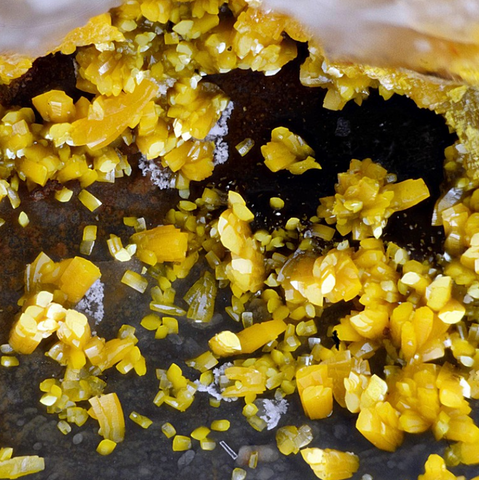CARNOTITE
Class : Phosphates, arsenates, vanadates
Subclass : Uranyl vanadates
Crystal system : Monoclinic
Chemistry : K2(UO2)2(VO4)2 3H2O
Rarity : Quite common
Carnotite is a fairly common secondary mineral in the oxidation zone of uranium deposits in sedimentary contexts. It owes its name to the French chemist and mining engineer Marie-Adolphe Carnot. It is a hydrated vanadate of uranium and potassium which most often occurs in crystalline powder, or in inconsistent microcrystalline aggregates, lemon yellow to amber yellow in color. More rarely, it forms flattened crystals, associated in divergent aggregates. It constitutes the main uranium ore in the sedimentary deposits of Colorado (Uravan, Placerville, Paradox, etc...).
Main photo : Carnotite from Monument Valley, Utah, USA © Stephan Wolfsried
Carnotite in the World
Twinning and special crystallizations
A twin is known on {001}.
Due to its origin in a sedimentary context, carnotite can cover certain fossils, this is the case in Cameron (Arizona, USA) where specimens of carnotite were discovered on fossil wood.
Right photo : Carnotite on fossil wood from Cameron, Arizona, USA @ Kelly Nash
Fakes and treatments
No fake identified for this mineral species.
Hardness : 2
Density : 4.70
Fracture : Micaceous
Streak : Yellow
TP : Translucent
RI : 1.750 to 1.950
Birefringence : 0.200
Optical character : Biaxial -
Pleochroism : Low
Fluorescence : None
Solubility : Acids
Magnetism : None
Radioactivity : Very strong






